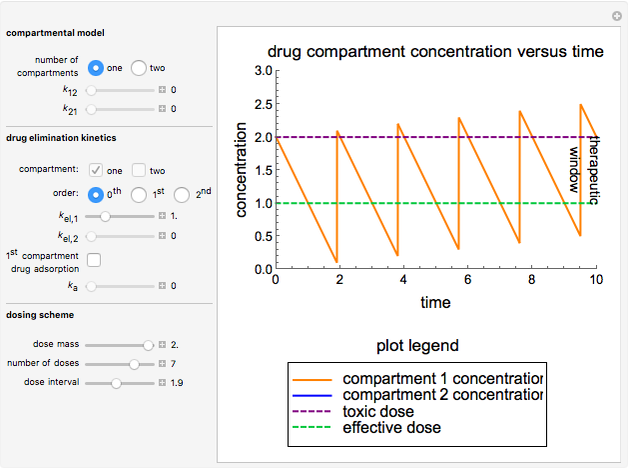Pharmacokinetic Modeling


Description
One- and two-compartment pharmacokinetic models are used to plot the concentration of a drug in the body as a function of time for a given dosing scheme. The drug is injected into the first compartment, and the mass of the dose, the number of doses, and the intervals between doses are selected by sliders. The objective is to select a dosing scheme so that as much of the drug as possible has a concentration between the effective does and the toxic dose (the therapeutic window). The drug can be eliminated from the first compartment (rate constant selected by slider for kel,1), absorbed in the first compartment (slider for ka) or transferred to the second compartment (slider k12). Similarly, in the second compartment the drug can be eliminated (slider kel,2) or transferred back to compartment one (slider k21). The order of the drug elimination kinetics can be changed. The areas under the curves correspond to the total exposure of the drug.
About
View the source code for this simulation


